Abstract
The pharmacokinetic behaviour and phototherapeutic effectiveness of bis(di-isobutyloctadecylsil-oxy)-2,3-naphthalocyanatosilicon (iso-BOSiNc) incorporated into dipalmitoyl-phosphatidylcholine (DPPC) liposomes have been studied in Balb/c mice bearing an MS-2 fibrosarcoma. We found that iso-BOSiNc i.v.-injected at a dose of 0.5 mg kg-1 b.w. is preferentially transported by serum lipoproteins; in particular, the photosensitiser is associated with LDL (57.8% of total recovery in the serum) and HDL (35.7%) while minor amounts are associated to VLDL (2.63%) and other serum proteins (3.89%), Iso-BOSiNc concentrations greater than 1 microgram g-1 of tissue are recovered from the tumour at 12-48 h after administration while the ratio of iso-BOSiNc concentration in tumour and peritumoral tissue is greater than 10. Upon increasing the injected dose, the additional iso-BOSiNc is almost exclusively bound by HDL, which leads to large uptake of the photosensitiser by liver and spleen. The efficiency of iso-BOSiNc as a photodynamic agent was measured upon irradiation with a different dose-rate for a total light dose of 450 J cm-2. The extent of tumour necrotic area increases as a function of the time after the end of PDT treatment and reaches a maximum level after about 24 h. Moreover, the necrotic area is linearly dependent on the irradiation dose-rate up to 100 mW cm-2. In all there is substantial evidence that iso-BOSiNc delivered in a liposomal dispersion is a highly effective photosensitizer for PDT of tumours.
Full text
PDF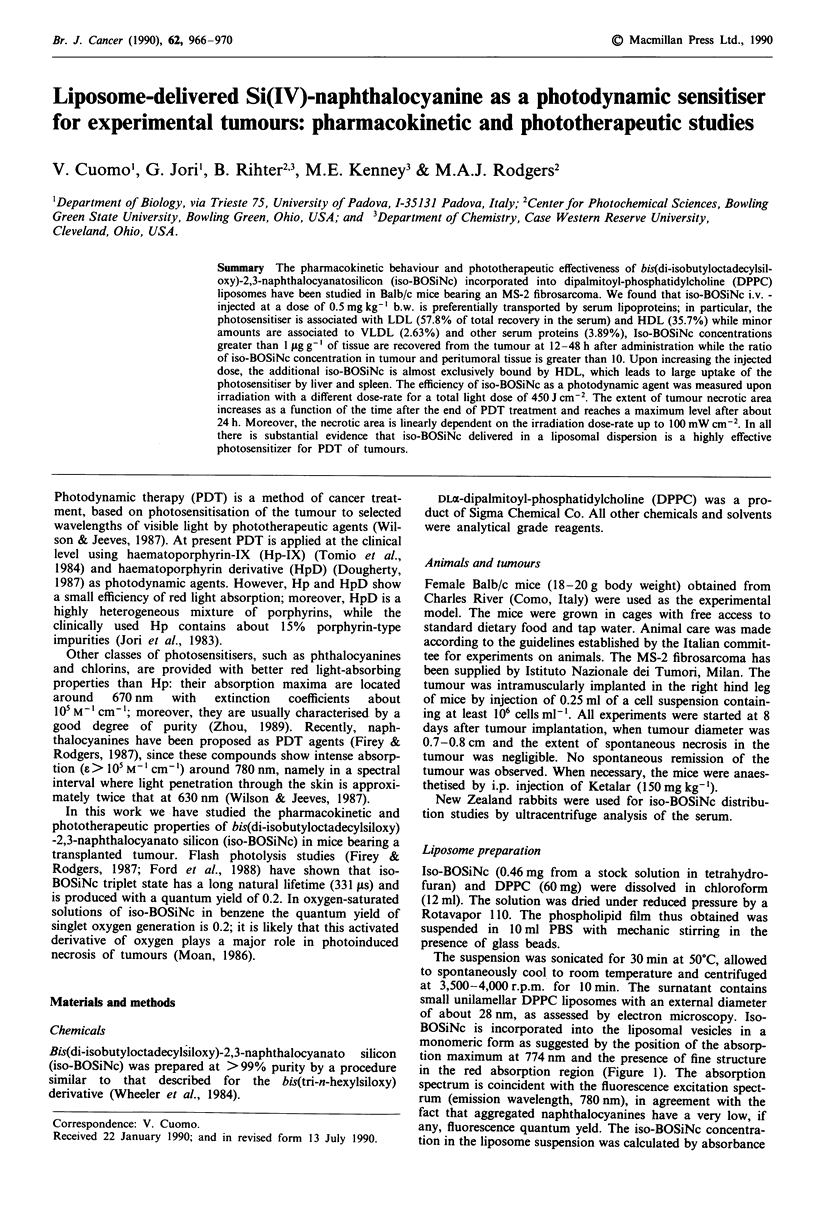
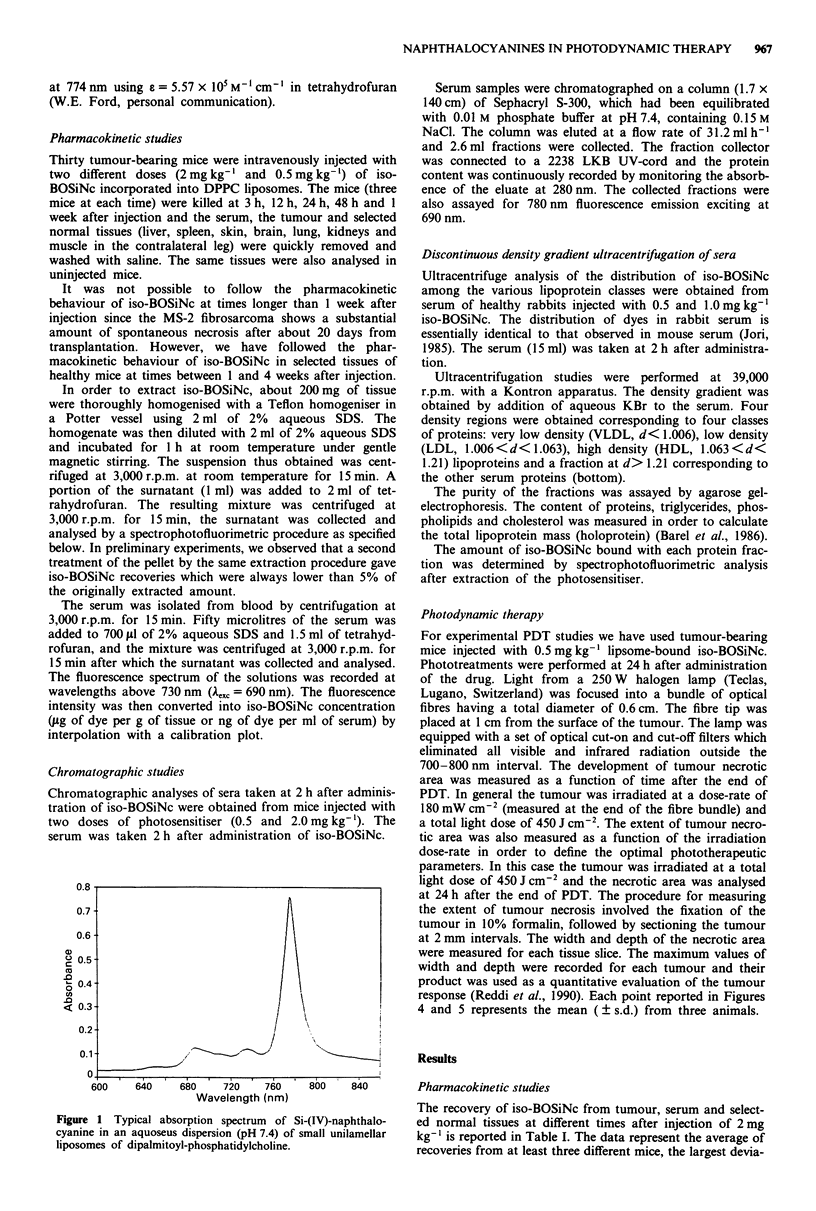
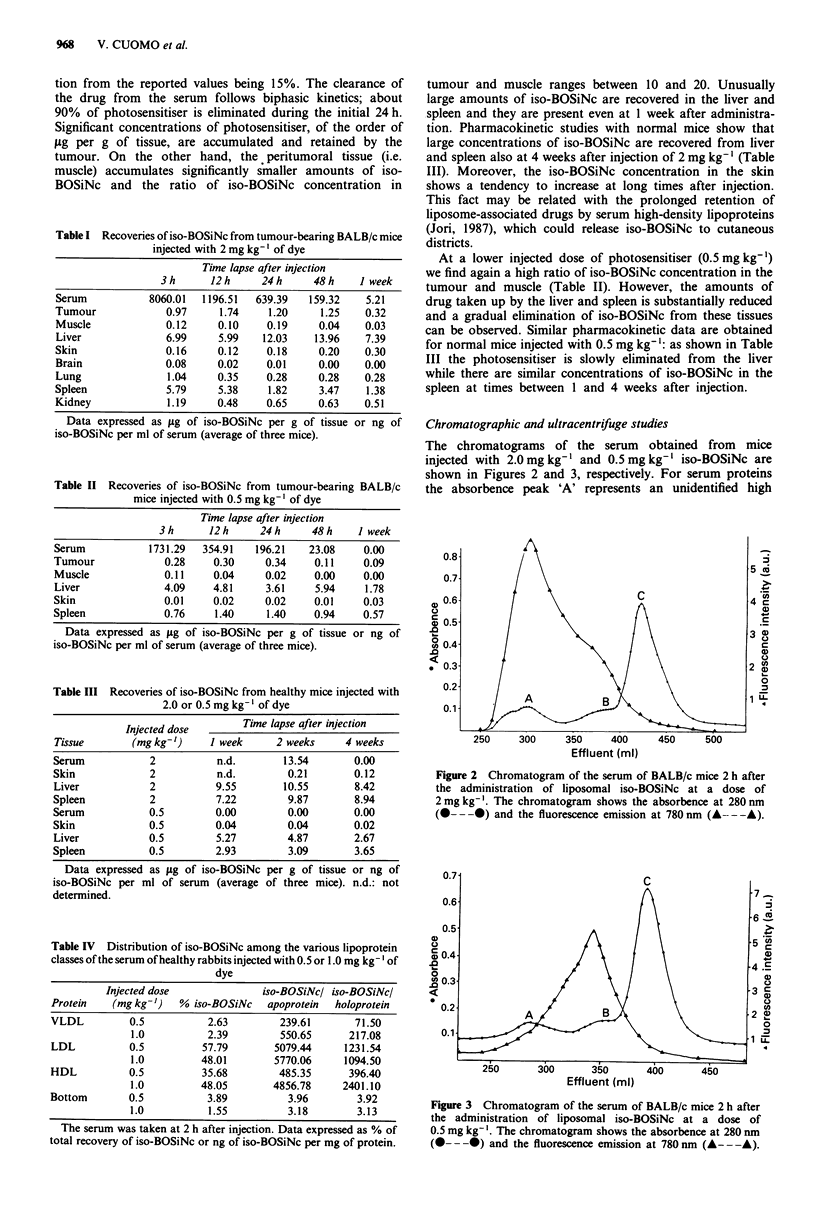
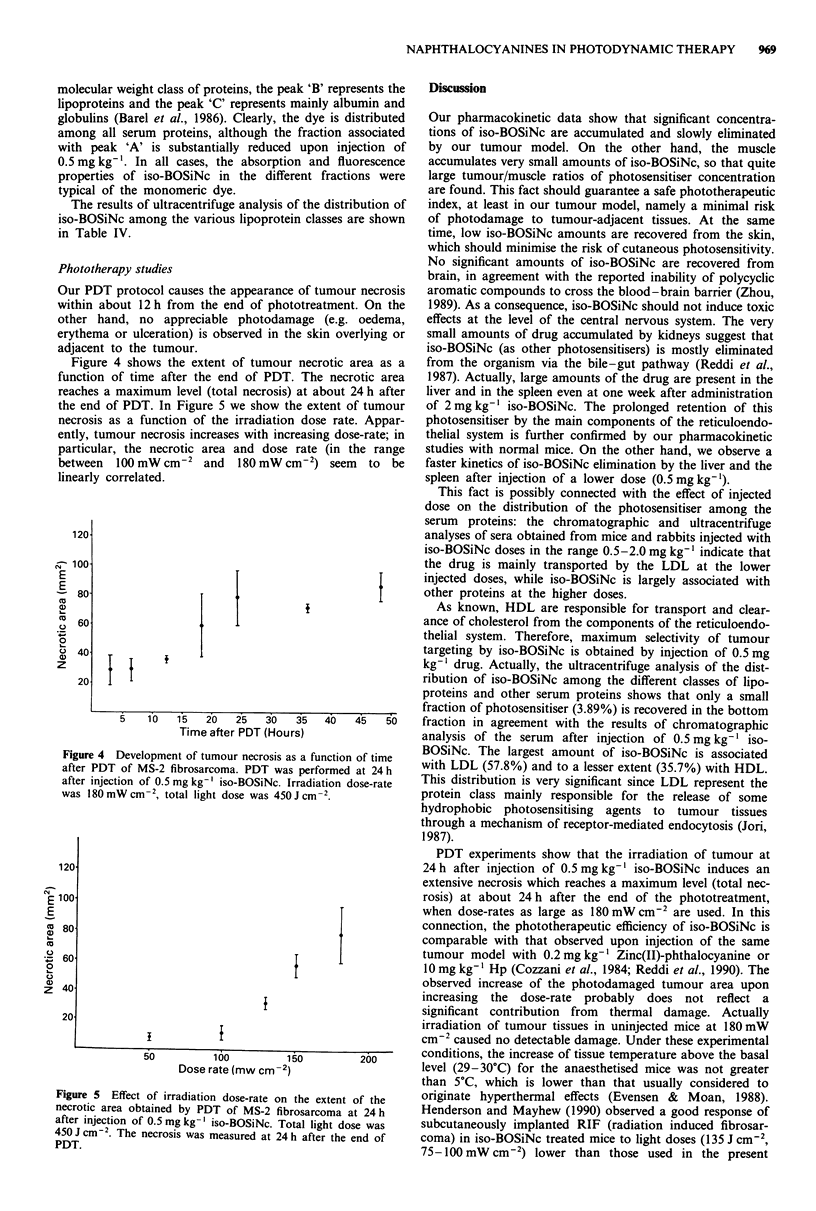
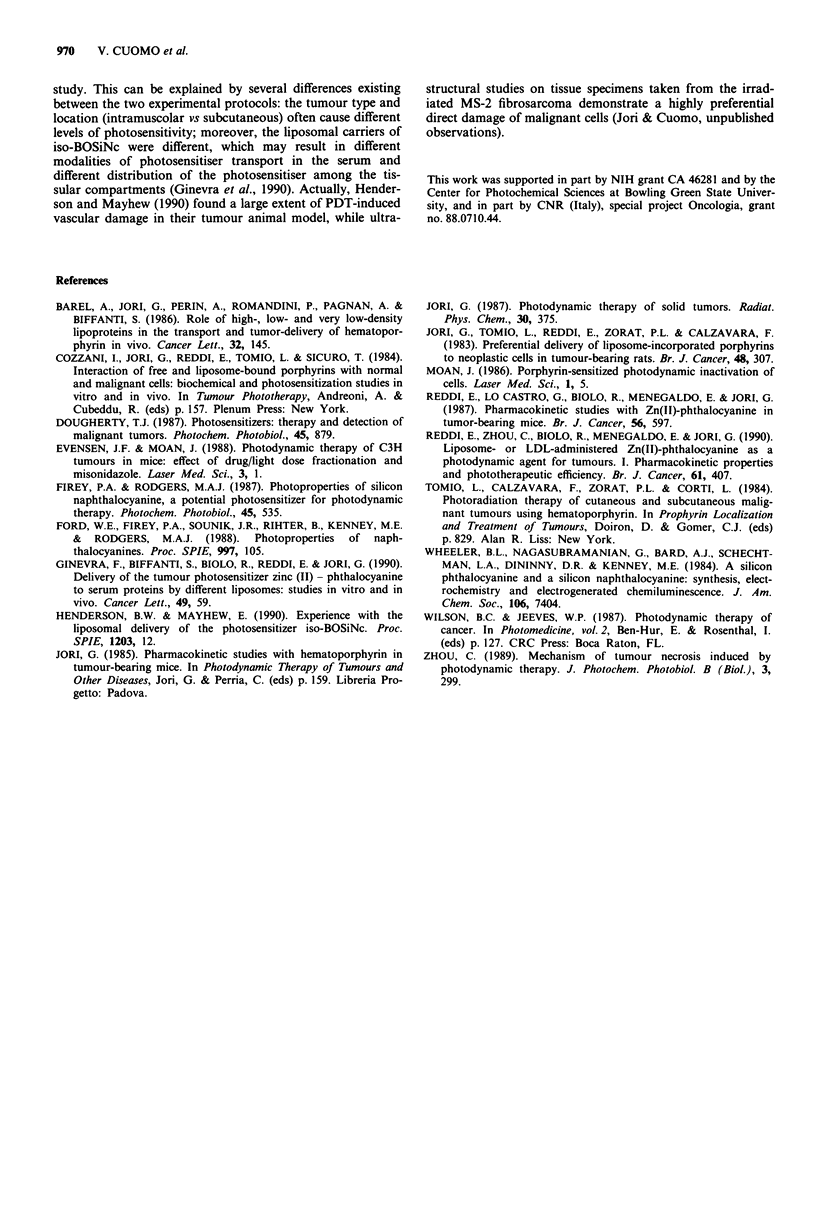
Selected References
These references are in PubMed. This may not be the complete list of references from this article.
- Barel A., Jori G., Perin A., Romandini P., Pagnan A., Biffanti S. Role of high-, low- and very low-density lipoproteins in the transport and tumor-delivery of hematoporphyrin in vivo. Cancer Lett. 1986 Aug;32(2):145–150. doi: 10.1016/0304-3835(86)90112-6. [DOI] [PubMed] [Google Scholar]
- Dougherty T. J. Photosensitizers: therapy and detection of malignant tumors. Photochem Photobiol. 1987 Jun;45(6):879–889. doi: 10.1111/j.1751-1097.1987.tb07898.x. [DOI] [PubMed] [Google Scholar]
- Firey P. A., Rodgers M. A. Photo-properties of a silicon naphthalocyanine: a potential photosensitizer for photodynamic therapy. Photochem Photobiol. 1987 Apr;45(4):535–538. doi: 10.1111/j.1751-1097.1987.tb05414.x. [DOI] [PubMed] [Google Scholar]
- Ginevra F., Biffanti S., Pagnan A., Biolo R., Reddi E., Jori G. Delivery of the tumour photosensitizer zinc(II)-phthalocyanine to serum proteins by different liposomes: studies in vitro and in vivo. Cancer Lett. 1990 Jan;49(1):59–65. doi: 10.1016/0304-3835(90)90139-o. [DOI] [PubMed] [Google Scholar]
- Jori G., Tomio L., Reddi E., Rossi E., Corti L., Zorat P. L., Calzavara F. Preferential delivery of liposome-incorporated porphyrins to neoplastic cells in tumour-bearing rats. Br J Cancer. 1983 Aug;48(2):307–309. doi: 10.1038/bjc.1983.186. [DOI] [PMC free article] [PubMed] [Google Scholar]
- Reddi E., Lo Castro G., Biolo R., Jori G. Pharmacokinetic studies with zinc(II)-phthalocyanine in tumour-bearing mice. Br J Cancer. 1987 Nov;56(5):597–600. doi: 10.1038/bjc.1987.247. [DOI] [PMC free article] [PubMed] [Google Scholar]
- Reddi E., Zhou C., Biolo R., Menegaldo E., Jori G. Liposome- or LDL-administered Zn (II)-phthalocyanine as a photodynamic agent for tumours. I. Pharmacokinetic properties and phototherapeutic efficiency. Br J Cancer. 1990 Mar;61(3):407–411. doi: 10.1038/bjc.1990.89. [DOI] [PMC free article] [PubMed] [Google Scholar]
- Zhou C. N. Mechanisms of tumor necrosis induced by photodynamic therapy. J Photochem Photobiol B. 1989 Jun;3(3):299–318. doi: 10.1016/1011-1344(89)80035-1. [DOI] [PubMed] [Google Scholar]


